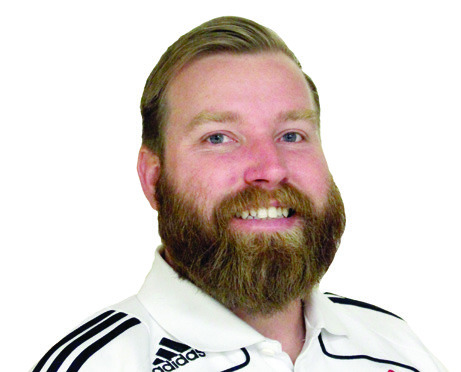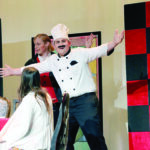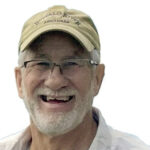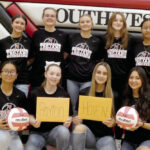Kyle Troutman: A stir about early out

When it comes to scrutinizing government entities, a frequent target is the local school district.
Administrators do their best to provide quality educations that prepare students for the workforce or college, and the task is a monumental one, worthy of a healthy dose of criticism from time to time.
One of those times came this week at Cassville High School after a letter was sent to parents offering their students participation in the “Early Out Incentive.”
Cassville high schoolers have seven classes per day, plus the 25-minute “Wildcat Time” at the end of the day.
The early out incentive, which parents or guardians must sign off on, allows students who have hit a set grade benchmark to leave school during Wildcat Time if they have the means, or to spend the final minutes of the day in the gym with friends, playing basketball or just decompressing.
The idea isn’t a novel one. Early out incentives have been around for years. The change is to the benchmark.
That’s what fired up social media over the weekend as it was pointed out Cassville’s mark is at least a 65% in all classes — a D average.
The questions asked about the threshold are fair. Are we keeping students accountable by only requiring Ds? Does such a low bar fly in the face of high-achieving students working above and beyond to excel? Is there something better students could be doing with that time?
My first thought when I read the policy was sympathetic to the students. I’m at a lot of high school events, from sports to music, fine arts to clubs and more. My thought was, most kids these days are so heavily involved in extracurriculars, a half-hour to themselves at the day’s end may work wonders for their mental health.
Considering the legitimate criticisms of the policy and with my own opinion, I called Principal Tyler Willis Tuesday morning to ask the school’s stance.
His explanation turned the issue on its head. The incentive is not crafted for those receiving it — it’s for those that aren’t.
The change was spearheaded by a group of teachers that formed a committee to revamp Wildcat Time. It was suggested to do away with the period all together, but due to so many students involved in activities that pull them out of school early, staff concluded too many students would miss too much instruction time.
Instead, their recommendation was to lower the early out incentive benchmark from 70% to 65%, but on the other end of the scale is where the changes occurred.
Cassville has a student body of about 620 students, and Willis said about a third, approximately 206, are below a 65% in at least one of their seven classes any given week of the school year. Most of those failing grades, Willis said, are due to missed assignments.
Previously, students who did not qualify for the incentive stayed in their regular classrooms to play catch-up. The setup, Willis said, was inconsistent and ineffective at helping struggling students recover.
Now, instead of staying in their classrooms, those 200 or so students are all gathered in the same location, with an overabundance of teachers on hand to provide more direct instruction and guidance.
“It’s really about taking the end of the day to talk to the students failing [a class] and work with them to no longer fail,” Willis said. “The early out incentive is less about having good grades and more about supporting students who are struggling.”
Willis also adamantly agreed with the criticism that 65% in all classes is a low bar. Yet, he said, it qualifies as passing.
“We are not encouraging students to get Ds,” he said. “But even with a 65%, they do earn the credit and progress toward graduation.”
For high achievers, Cassville offers incentives like academic letters, parking preference based on GPA, honor roll, National Honor Society and the A+ program.
A perk no longer offered is finals exemptions, dropped as a result of feedback from recent graduates now in college that say skipping finals left them unprepared for the tests of post-secondary education.
“They don’t want to take them, but they need to, and they see that after being in college,” Willis said.
Public education is a hefty responsibility, and the onus on Willis is to make sure every pair of feet that walk through his doors also walk across a stage in four years’ time.
The concerted effort by the teacher committee and administration to place a focus on students failing a class is expected. The honors available to high achievers are equally expected.
My biggest concern after seeing both sides of the issue is what about the middle students? What could be done or is being done to help a student making Bs and Cs elevate to As and Bs?
Ultimately, it comes down to parents. The early out incentive is only with parental approval, and according to Willis, 98% of parents sign their permission.
I say set your own standard. I don’t have kids in high school yet, but when the time comes, I will expect As and Bs.
The school has to set its mark with all students in mind, but parents can and must set their own standards for students to be successful.
It takes a village of people and a village of approaches to make public education work. Let’s each make sure we do our part.
Kyle Troutman has served as editor of the Cassville Democrat since 2014 and owner/publisher since 2023. He was named William E. James/Missouri Outstanding Young Journalist for daily newspapers in 2017, and he is a two-time ISWNE Golden Dozen award winner. He may be reached at 417-847 2610 or ktroutman@cassville- democrat.com.
PUBLISHER’S NOTE: Do you have an opinion about this opinion? Share it with us and the community in a letter to the editor! Letters may be submitted using this link: https://forms.gle/RmdQfYe86PtkTKp8A.






